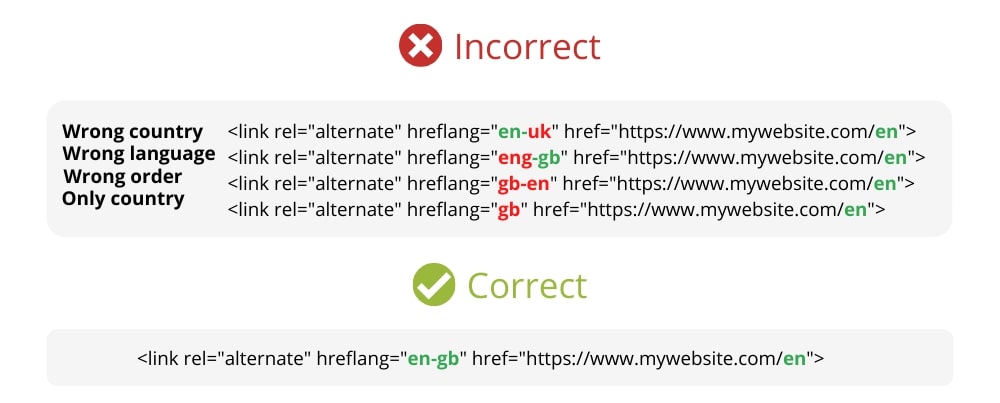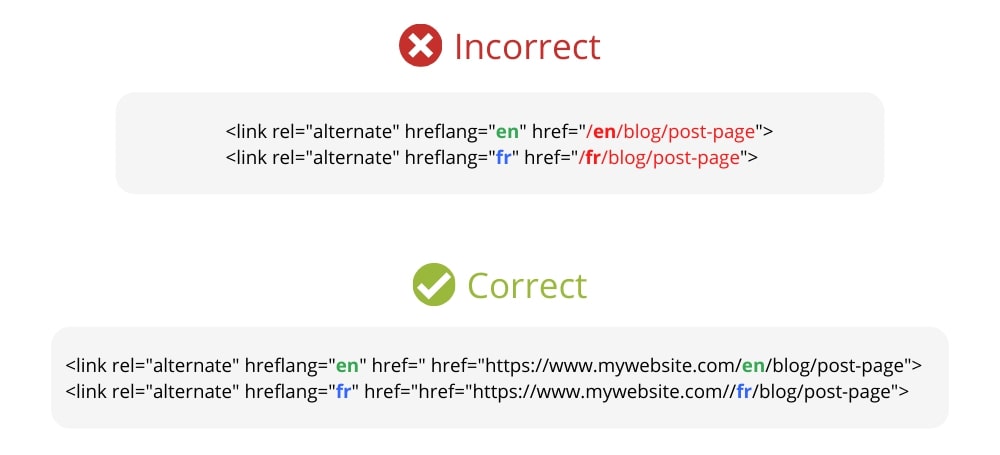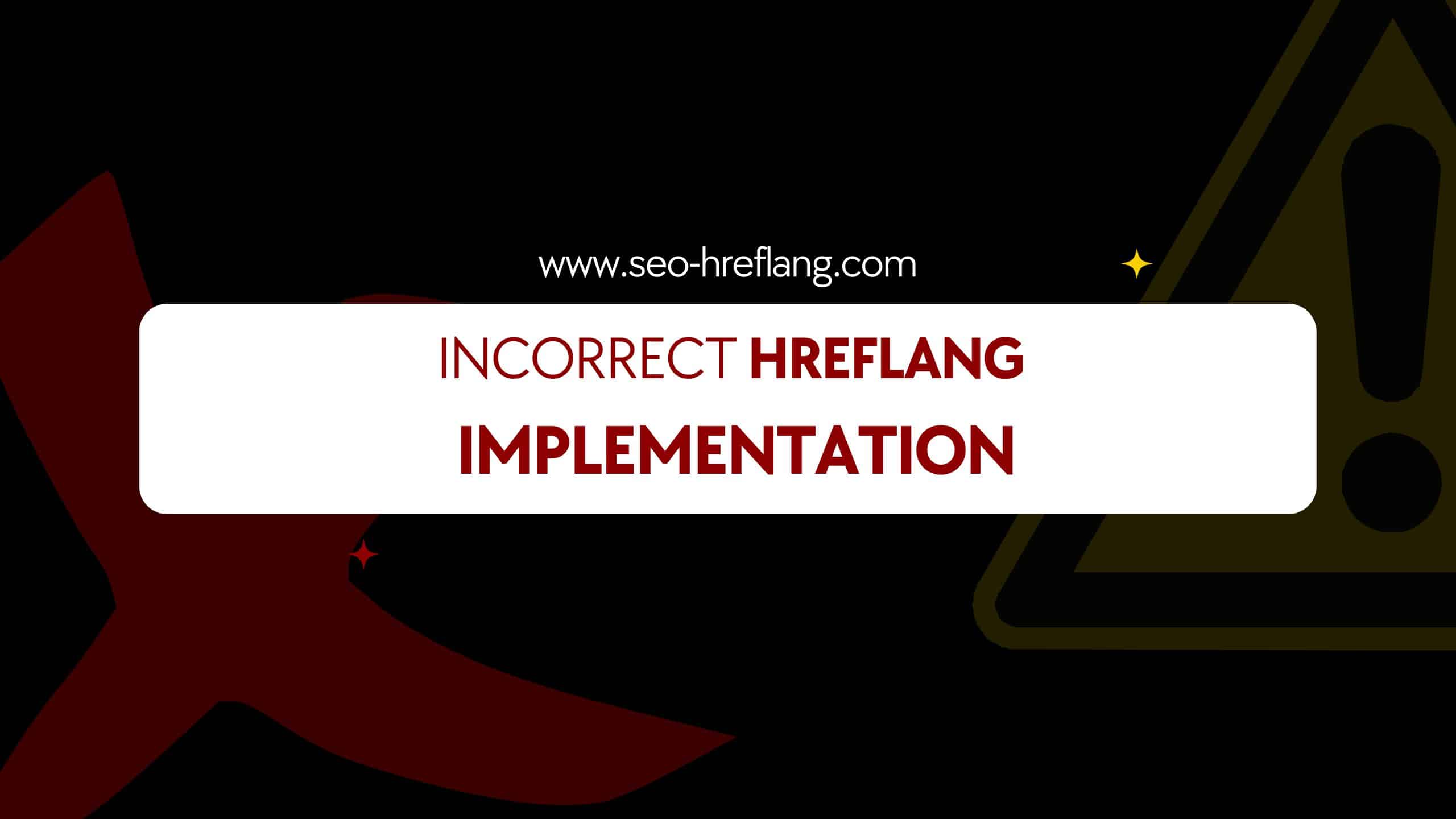Incorrect hreflang Implementation : In the ever-evolving world of search engine optimization (SEO), catering to a global audience has become a crucial aspect of digital marketing. To ensure that websites reach their target audience in different regions and languages, webmasters rely on the hreflang attribute.
Properly implemented hreflang tags signal search engines about the intended language and geographical targeting of web pages, thus optimizing their performance in international search results. However, the incorrect hreflang implementation can lead to a myriad of issues, affecting a website’s visibility, ranking, and user experience.
This comprehensive guide delves into the complexities of hreflang implementation, exploring common mistakes, their implications, and offering best practices to help webmasters navigate the intricacies of international SEO effectively.
1. Understanding hreflang and its Importance:
Hreflang is an HTML attribute used to indicate the language and geographical targeting of a web page. It plays a crucial role in multilingual and multinational websites, enabling search engines like Google to serve the most relevant content to users based on their location and language preferences. Correctly implementing hreflang ensures that users are directed to the most appropriate version of a page, enhancing user experience and increasing engagement.
2. Common Types of Incorrect hreflang Implementations:
2.1. Missing hreflang Tags: The absence of hreflang tags altogether is one of the most common mistakes. Without these tags, search engines may struggle to determine the intended target audience for the page, leading to misinterpretations and incorrect ranking in international search results.
2.2. Incorrect Language or Country Codes: Using incorrect language or country codes within the hreflang attribute can significantly impact a website’s SEO efforts. Search engines rely on these codes to understand the language and geographic targeting of a page. Using the wrong codes can lead to misidentification and improper indexing.

2.3. Self-Referencing hreflang Tags: A self-referencing hreflang tag points to the current page itself, which may confuse search engines and hinder the proper indexing of alternate versions of the page.
2.4. Circular hreflang References: In certain cases, webmasters mistakenly create circular hreflang references among different pages. This occurs when page A points to page B, page B points to page C, and page C, in turn, points back to page A. Such circular references confuse search engines, leading to incorrect rankings and indexing.
2.5. Conflicting hreflang Information: When a page contains conflicting hreflang information, search engines may struggle to determine the correct targeting of the page, leading to erratic rankings and search results.
3. Implications of Incorrect hreflang Implementation:
3.1. Keyword Dilution: Without accurate hreflang implementation, search engines may rank the wrong language or regional version of a page for specific keywords. This dilutes the SEO efforts and may negatively impact organic traffic and conversions.
3.2. Duplicate Content Issues: Incorrect hreflang implementation can lead to duplicate content issues, where search engines view different language versions of the same page as duplicate content. This can result in penalties and decreased visibility in search results.
3.3. Reduced User Experience: When users land on pages that are not in their preferred language or region, the user experience is compromised. High bounce rates and low engagement metrics can harm a website’s overall SEO performance.
3.4. Geotargeting Challenges: Proper hreflang implementation helps websites to effectively target specific regions and countries. Incorrect implementation, however, can hinder geotargeting efforts, making it challenging to capture local markets.
3.5. International Brand Reputation: For multinational brands, incorrect hreflang implementation can damage their international brand reputation. Users encountering content in the wrong language or region may perceive the website as unprofessional or untrustworthy.
4. Best Practices for Correct hreflang Implementation:
4.1. Use the “x-default” Attribute: The “x-default” attribute serves as a fallback option when a user’s language or region doesn’t match any of the available hreflang alternatives. This ensures that users are directed to a default language or regional version of the page.
4.2. Implement Self-Referencing Canonical Tags: To prevent self-referencing hreflang issues, use canonical tags that point to the preferred version of the page. This helps search engines understand the canonical version to index, avoiding confusion.
4.3. Test hreflang Annotations: Before deploying hreflang tags on a live website, test them thoroughly using tools like Google Search Console or third-party SEO auditing tools. This helps identify and rectify errors in the implementation process.
4.4. Avoid Unnecessary Redirects: Ensure that hreflang tags do not trigger unnecessary redirects between language versions, as this can negatively impact page load times and user experience.
4.5. Monitor Search Console for Errors: Regularly monitor Google Search Console for any hreflang-related errors or warnings. This helps identify and address potential issues before they escalate.

Properly implementing hreflang tags is crucial for international SEO success. Incorrect hreflang implementation can lead to a range of issues, from keyword dilution and duplicate content problems to poor user experience and geotargeting challenges.
By adhering to best practices and understanding the implications of incorrect hreflang implementation, webmasters can improve their website’s visibility, ranking, and user engagement in international search results, ultimately reaching and connecting with a global audience effectively.





